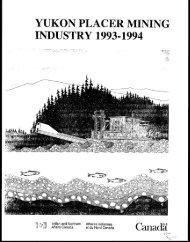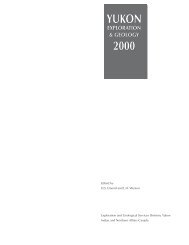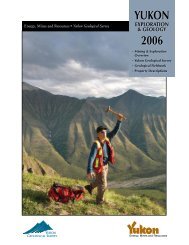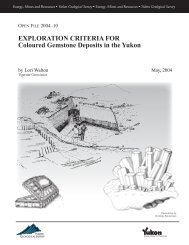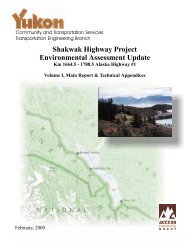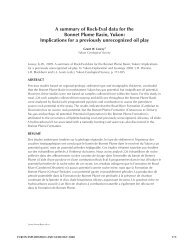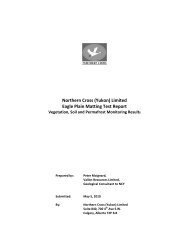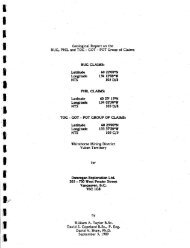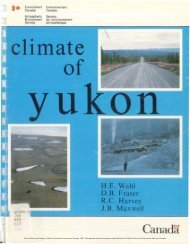WhiteCAP_Plan_01SEPT..
WhiteCAP_Plan_01SEPT..
WhiteCAP_Plan_01SEPT..
Create successful ePaper yourself
Turn your PDF publications into a flip-book with our unique Google optimized e-Paper software.
NCE <strong>WhiteCAP</strong> Environmental History<br />
since noted that the several mild winters have put Whitehorse residents out of the habit<br />
of using frost protection devices.<br />
Cold conditions can also create challenging conditions for city operations. On January 3,<br />
1991, ice fog and temperatures of -45°C reduced visibility and forced the Whitehorse<br />
airport to shut down. On the same day, the record low temperatures halted work by city<br />
crews, who could not use certain equipment for fear of damage. The metal equipment<br />
became so brittle it could snap or shear when it hit curbs.<br />
3.3.3 Community Responses to Icy Conditions<br />
In 1960, Red Cross Water Safety officials stressed safety measures to ensure the<br />
security of residents engaged in winter outdoor activities. Following safety rules helps to<br />
prevents accidents and aids rescue operations. For example, one must ensure that the<br />
ice on the rivers, sloughs and lakes is four inches thick before it is traversed (REF).<br />
Warnings and official messages are the standard method for creating awareness in the<br />
community of dangerous driving conditions and ensuring motorists use the proper<br />
amount of caution. In December 1981, the RCMP issued an official warning to motorists<br />
to be very careful on streets. Yukon Government officials have also told residents to<br />
avoid the Yukon highways unless it was absolutely essential to make a trip. The<br />
highways around Whitehorse are sanded to increase traction and create safer driving<br />
conditions.<br />
Historically, Whitehorse has responded well to infrastructure concerns associated with<br />
icing. On August, 1989, the city made a change to their Water and Sewage bylaw, such<br />
that the city was to now be responsible for pipes freezing on city property. However, the<br />
Municipal Services Director cautioned that residents were still responsible for their own<br />
frost protection devices (bleeders, recirculation pumps and transformers being the most<br />
common). In September 1989, the city addressed concerns about potential pipeline<br />
freezing in Porter Creek. These pipelines were fairly close to the surface and solutions<br />
were established to protect the system and prevent a freeze-up, including placing a heat<br />
trace, a bleeder and a recirculation system.<br />
Whitehorse has been searching for a sewage treatment system that can accommodate<br />
ice since 1977. For example, sewage lagoons work best between 14 and 30°C, and are<br />
frost free only 60 days of the year as a result. Only in the warmest summer months do<br />
the lagoons get enough light and oxygen to mix up bacteria. In 1985, the city spent a few<br />
thousand dollars to clean the sludge from the Whitehorse lagoons to meet the federal<br />
standards.<br />
3.3.4 Icy Conditions: Adaptive Capacity and climate change<br />
The city has responded consistently to episodes of icy conditions by making<br />
improvements to water and sewage infrastructure and is continually searching for new<br />
ways to improve the efficacy of sewage systems. Residents remain responsible for<br />
ensuring that the necessary precautions are taken to reduce ice build-up on housing<br />
structures and sidewalks in front of houses. However, injuries due to accidents involving<br />
icy conditions continue to occur each year, likely aggravated by the negligence of some<br />
property owners to remove ice build-up on public walkways. The enforcement of such<br />
D.10



